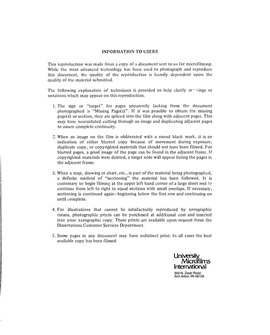| dc.contributor.author | Hills, Ernie Marvin, | en_US |
| dc.date.accessioned | 2013-08-16T12:29:16Z | |
| dc.date.available | 2013-08-16T12:29:16Z | |
| dc.date.issued | 1984 | en_US |
| dc.identifier.uri | https://hdl.handle.net/11244/5285 | |
| dc.description.abstract | There do exist, however, contemporary accounts of performances in the Renaissance which confirm that instrumental participation was common in virtually all musical contexts. Some of the most detailed of these accounts are in the form of booklets and performance notes describing intermedii, elaborately staged productions of vocal and instrumental music performed between the acts of a comedy. Several of the best documented intermedii were those performed during wedding celebrations in the Medici court of Florence between 1518 and 1589. Of particular importance are the festivals of 1539 and 1589 for which the music survives in complete original editions. The music of the 1539 intermedii is of great historical significance to trombonists because it contains the earliest surviving music for which a composer specified the use of trombones. | en_US |
| dc.description.abstract | Through an extraction of the eyewitness accounts and performance notes the instrumentation has been determined. This provides insight into the sixteenth-century usage of many wind, string, and keyboard instruments. The portrait of trombone usage focuses around the instrumental combinations which utilize trombones and the specific manner in which composers wrote for the instrument. The information regarding plots and staging suggests that instrumentation was strongly influenced by dramatic situation. | en_US |
| dc.description.abstract | The literature from the Florentine intermedii is all the more valuable because it illustrates the evolution of trombone usage through the sixteenth century in the practices of many composers. The general ways in which these composers employed trombones and other instruments may be thought of as principles of orchestration common to the period. These, in turn, are useful in determining aspects of performance practice in other Italian dramatic music of the Renaissance, and in understanding trends that continued well into the seventeenth century. | en_US |
| dc.description.abstract | Many historians of instrumental development cite the brass ensemble music of Giovanni Gabrieli as providing the earliest examples of trombone literature. However, the appearance of trombones in visual art as early as 1450 and throughout the Renaissance suggests that the trombone had been a common and versatile instrument prior to the seventeenth century. The lack of knowledge regarding early trombone music is due in part to the absence of specific indications of instrumentation by sixteenth-century composers. | en_US |
| dc.format.extent | vii, 229 leaves : | en_US |
| dc.subject | Music. | en_US |
| dc.title | The use of trombone in the Florentine intermedii, 1518-1589 / | en_US |
| dc.type | Thesis | en_US |
| dc.thesis.degree | D.M.A. | en_US |
| dc.thesis.degreeDiscipline | School of Music | en_US |
| dc.note | Source: Dissertation Abstracts International, Volume: 45-08, Section: A, page: 2296. | en_US |
| ou.identifier | (UMI)AAI8425538 | en_US |
| ou.group | Weitzenhoffer Family College of Fine Arts::School of Music | |
